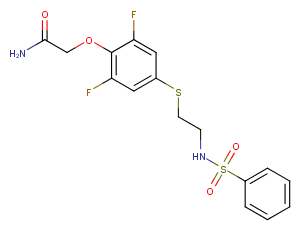Powder: -20°C for 3 years | In solvent: -80°C for 1 year


PEPA is an allosteric AMPA receptors modulator; binds to the GluA2o and GluA3o LBDs and can be utilized as an indicator of AMPA receptor heterogeneity.

| Pack Size | Availability | Price/USD | Quantity |
|---|---|---|---|
| 1 mg | In stock | $ 34.00 | |
| 2 mg | In stock | $ 47.00 | |
| 5 mg | In stock | $ 77.00 | |
| 10 mg | In stock | $ 117.00 | |
| 25 mg | In stock | $ 253.00 | |
| 50 mg | In stock | $ 495.00 | |
| 100 mg | In stock | $ 737.00 | |
| 1 mL * 10 mM (in DMSO) | In stock | $ 85.00 |

| Description | PEPA is an allosteric AMPA receptors modulator; binds to the GluA2o and GluA3o LBDs and can be utilized as an indicator of AMPA receptor heterogeneity. |
| Molecular Weight | 402.44 |
| Formula | C16H16F2N2O4S2 |
| CAS No. | 141286-78-4 |
Powder: -20°C for 3 years | In solvent: -80°C for 1 year
DMSO: 50 mg/mL (124.24 mM), Sonification is recommended.
You can also refer to dose conversion for different animals. More
bottom
Please see Inhibitor Handling Instructions for more frequently ask questions. Topics include: how to prepare stock solutions, how to store products, and cautions on cell-based assays & animal experiments, etc.
PEPA 141286-78-4 Membrane transporter/Ion channel Neuroscience iGluR inhibit Inhibitor Ionotropic glutamate receptors inhibitor
